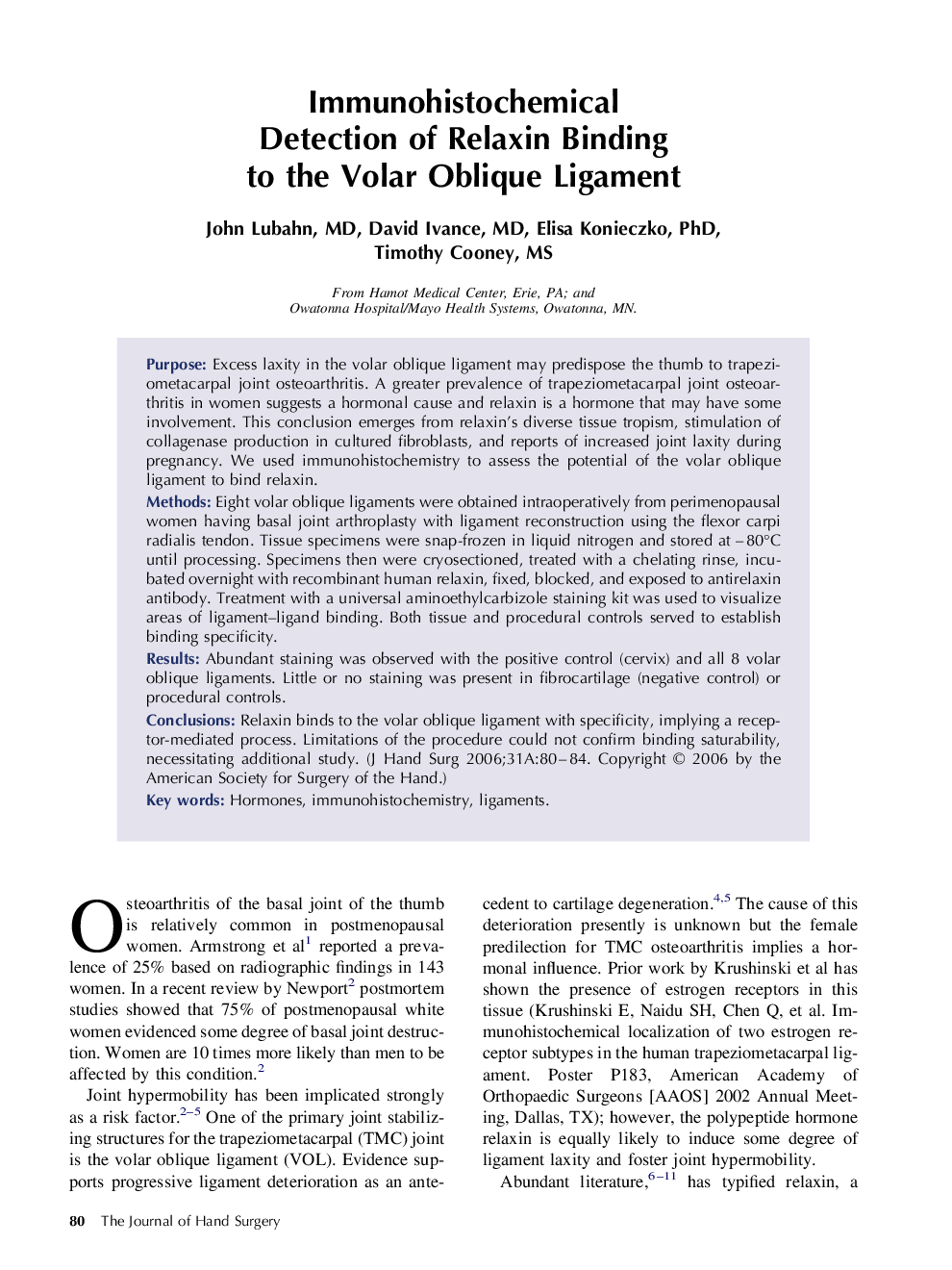| Article ID | Journal | Published Year | Pages | File Type |
|---|---|---|---|---|
| 4071000 | The Journal of Hand Surgery | 2006 | 5 Pages |
PurposeExcess laxity in the volar oblique ligament may predispose the thumb to trapeziometacarpal joint osteoarthritis. A greater prevalence of trapeziometacarpal joint osteoarthritis in women suggests a hormonal cause and relaxin is a hormone that may have some involvement. This conclusion emerges from relaxin’s diverse tissue tropism, stimulation of collagenase production in cultured fibroblasts, and reports of increased joint laxity during pregnancy. We used immunohistochemistry to assess the potential of the volar oblique ligament to bind relaxin.MethodsEight volar oblique ligaments were obtained intraoperatively from perimenopausal women having basal joint arthroplasty with ligament reconstruction using the flexor carpi radialis tendon. Tissue specimens were snap-frozen in liquid nitrogen and stored at –80°C until processing. Specimens then were cryosectioned, treated with a chelating rinse, incubated overnight with recombinant human relaxin, fixed, blocked, and exposed to antirelaxin antibody. Treatment with a universal aminoethylcarbizole staining kit was used to visualize areas of ligament–ligand binding. Both tissue and procedural controls served to establish binding specificity.ResultsAbundant staining was observed with the positive control (cervix) and all 8 volar oblique ligaments. Little or no staining was present in fibrocartilage (negative control) or procedural controls.ConclusionsRelaxin binds to the volar oblique ligament with specificity, implying a receptor-mediated process. Limitations of the procedure could not confirm binding saturability, necessitating additional study.
